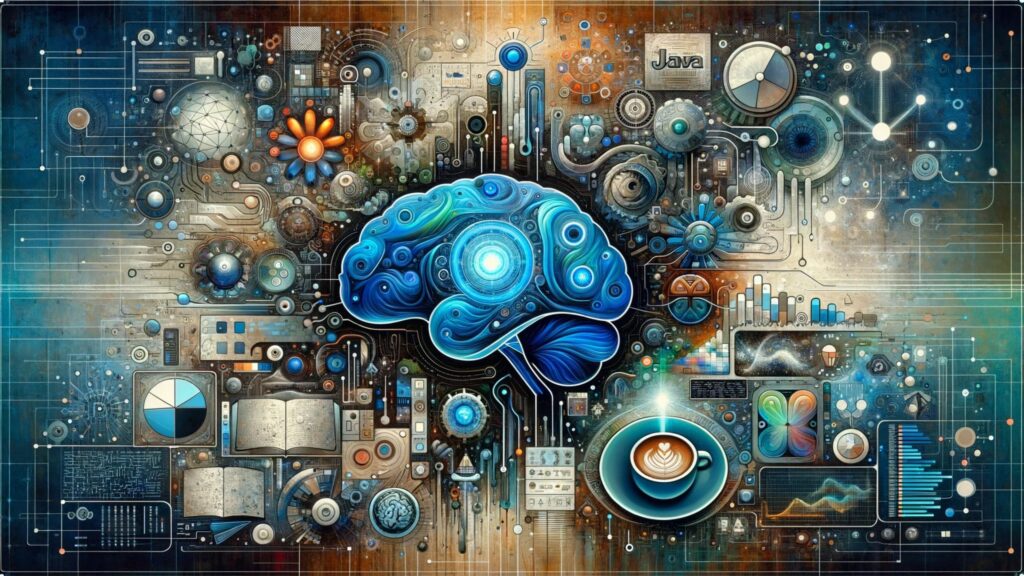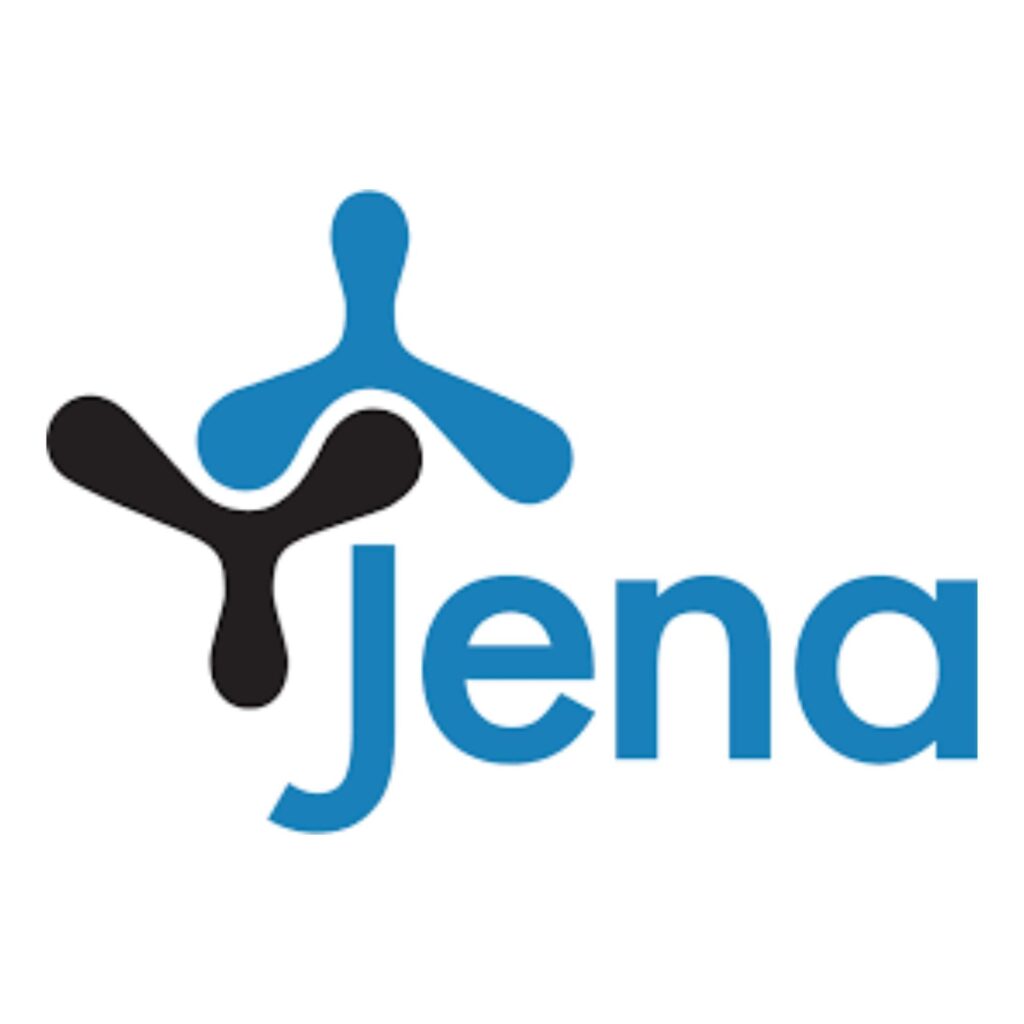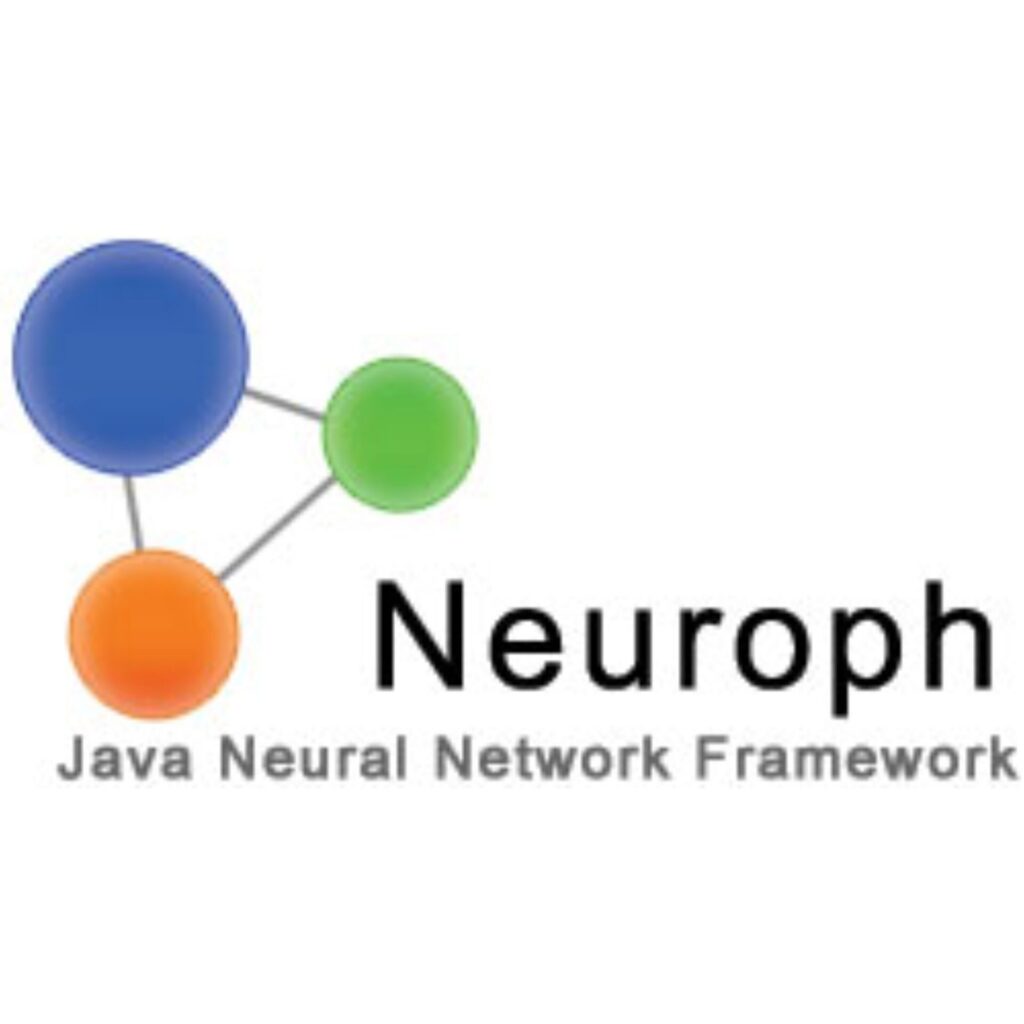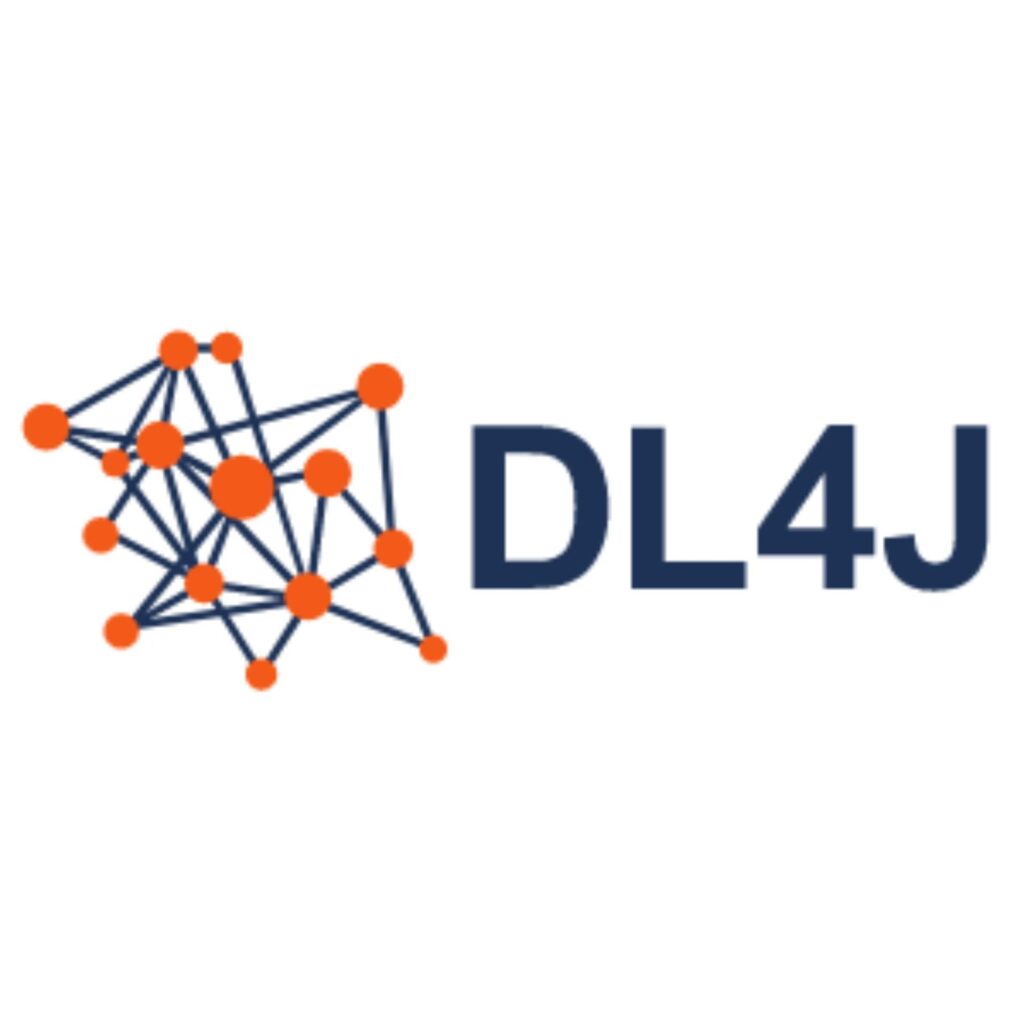Java has established itself as a vital language in the machine learning (ML) arena, known for its robustness and versatility. Its journey in ML is characterized by its ability to adapt to the evolving demands of this field. Java’s platform independence and high performance are particularly beneficial for ML applications, which often require consistent operation across diverse systems and the processing of large datasets.
The strength of Java in ML also lies in its extensive ecosystem, encompassing a variety of libraries and frameworks specifically tailored for ML tasks. These tools, including notable ones like Deeplearning4j and Apache Spark’s MLlib, offer ready-to-use algorithms and models, streamlining the development of ML solutions. Java’s strong typing and object-oriented capabilities further aid in managing complex data structures, a common requirement in ML algorithms.
Furthermore, Java’s widespread community support and comprehensive documentation make it an accessible choice for both experienced data scientists and newcomers to ML. This combination of performance, versatility, and community support positions Java as a key player in the field of machine learning.
Emerging Trends in Java for Machine Learning

Project Loom and its Impact on Java Performance and Concurrency
Project Loom is a significant stride in Java’s evolution, particularly in enhancing its performance and concurrency capabilities. It introduces two revolutionary concepts: virtual threads and structured concurrency. Virtual threads, also known as green threads, are lightweight and managed by the Java Virtual Machine (JVM) rather than the operating system. This innovation allows Java applications to scale beyond the limitations of physical CPU cores, dramatically increasing the number of concurrent operations a Java application can handle.
Structured concurrency simplifies the way Java handles multiple threads. Traditionally, Java applications dealing with concurrent operations required complex and error-prone code. Project Loom addresses this by providing a more straightforward API, allowing developers to treat a set of related concurrent operations as a single task. This approach not only simplifies code but also enhances error handling and task management, which are crucial for efficient ML algorithms that often rely on concurrent processing.
The Role of Native Compilation in Java Using GraalVM
Native compilation in Java, enabled by GraalVM, represents another trend with significant implications for machine learning. GraalVM allows Java applications to be compiled into native machine code, bypassing the need for JVM at runtime. This leads to faster startup times and reduced memory footprint, which are beneficial for ML applications that require high performance and efficiency, especially when processing large datasets.
One challenge with native compilation is handling dynamic features like Java Reflections, but frameworks such as Spring have been evolving to ensure compatibility with GraalVM’s native compilation. This adaptation ensures that Java remains a relevant and powerful language for ML applications, capable of leveraging the benefits of native compilation.
Innovations in the Spring Framework and Other Java Frameworks for ML Applications
The Spring Framework and other Java frameworks are continuously evolving to support the growing demands of machine learning. These frameworks are enhancing their capabilities to ensure faster startup times, efficient memory management, and improved performance – all critical factors in ML applications. They also focus on being cloud-ready and DevOps-friendly, which is essential for modern ML workflows that often rely on cloud computing and continuous integration/continuous deployment (CI/CD) pipelines.
These Java frameworks are integrating support for the latest Java features like CRaC, Loom, and native compilation, ensuring they stay at the forefront of ML development. By doing so, they provide Java developers with the tools and functionalities needed to build, train, and deploy efficient ML models.
Generative AI and Its Advancements in Java
Understanding Generative AI and its Applications
Generative AI stands as a transformative force in machine learning, focusing on creating new, original content. It’s like equipping AI with a form of imagination, enabling it to learn patterns in data and generate content that mirrors these patterns. The most recognized form of Generative AI is the Generative Adversarial Network (GAN), where two neural networks, a generator and a discriminator, work in tandem to produce incredibly realistic synthetic data. This technology has far-reaching applications, from composing music and generating artwork to creating convincing prose, thereby expanding the boundaries of creative expression.
Beyond GANs, other techniques like Variational Autoencoders (VAEs) and transformer-based models are also making significant strides. For instance, VAEs are being employed in fields like drug discovery for generating new molecular structures, while transformer models are enhancing conversational AI with human-like text generation. The advancements in Generative AI are not just technological but also open up new avenues in creative and practical applications.
The Integration of Generative AI Techniques in Java Environments
Java’s role in supporting Generative AI is pivotal. With its robust and scalable nature, Java provides a suitable environment for implementing these advanced AI models. Java’s extensive library ecosystem supports the integration of Generative AI techniques. Libraries like Deeplearning4j offer capabilities for implementing neural networks, including GANs and other architectures relevant to Generative AI.
Moreover, the JVM’s performance optimization, especially with recent advancements in areas like Project Loom and native compilation, significantly benefits the execution of resource-intensive Generative AI models. These improvements in Java’s concurrency model and execution efficiency are crucial for running complex Generative AI algorithms that require high computational power and efficient memory management.
No-Code Machine Learning and Java

The Rise of No-Code ML Platforms and Their Compatibility with Java
The emergence of no-code machine learning (ML) platforms marks a significant shift in the landscape of AI and ML development. These platforms are designed to make ML accessible to a broader audience, including those without a background in programming or data science. They feature intuitive, visual interfaces that allow users to build, train, and deploy ML models without writing any code. This approach is revolutionizing ML by simplifying the process and making it more user-friendly.
No-code ML platforms are particularly beneficial in scenarios where domain experts, such as business analysts, have a deep understanding of their data and the problems they need to solve but lack coding expertise. By providing an environment where ML models can be developed without writing code, these platforms empower a wider range of professionals to leverage ML for data-driven insights and decisions.
Java, with its long-standing reputation for stability and scalability, plays a crucial role in the backdrop of these no-code platforms. Many of these platforms are built on Java or can interface with Java applications, thereby leveraging Java’s performance and security features. This compatibility ensures that Java-based systems can easily integrate with no-code ML solutions, allowing for seamless implementation in existing Java environments.
How Java is Adapting to the No-Code ML Revolution
As the no-code ML revolution gains momentum, Java is adapting to meet this new trend. Java frameworks and libraries are increasingly offering features and integrations that support no-code ML platforms. For example, Java-based APIs and connectors are being developed to facilitate communication between Java applications and no-code ML tools. This integration allows Java developers to incorporate ML functionalities into their applications without needing to delve deeply into ML algorithm specifics.
Furthermore, Java’s community is also contributing to this transition. There are growing resources, tutorials, and support available for Java developers looking to integrate no-code ML platforms into their projects. This community support is vital in bridging the gap between traditional Java development and the emerging no-code ML paradigm.
Ethical and Explainable AI in the Java Ecosystem
The Importance of Ethical Considerations in ML
As machine learning (ML) becomes more integrated into various aspects of society, ethical considerations are increasingly coming to the forefront. Ethical AI focuses on creating systems that not only make decisions effectively but also in a manner that is fair, transparent, and accountable. This is particularly crucial in applications where AI decisions have significant impacts on individuals’ lives, such as in healthcare, finance, and law enforcement.
The ethical challenges in ML include avoiding bias in algorithms, ensuring privacy and security of data, and maintaining transparency in how decisions are made. These challenges are not just technical but also moral, requiring a multidisciplinary approach to ensure that ML systems are developed and deployed responsibly.
Java’s Approach to Developing Transparent and Explainable AI Models
In response to the need for ethical and explainable AI, the Java ecosystem is adapting to support the development of transparent and understandable AI models. Explainable AI (XAI) aims to make the decision-making processes of AI systems clear and comprehensible to humans. This is particularly important for complex models like deep neural networks, which are often seen as “black boxes” due to their intricate and opaque nature.
Java, known for its robustness and strong typing, is well-positioned to support the development of XAI. The language’s structure lends itself to creating clear and maintainable code, which is essential for building transparent AI systems. Additionally, Java libraries and frameworks are incorporating features that facilitate the development of explainable models. For instance, libraries are providing more tools for model visualization and interpretation, enabling developers to better understand and explain how their models make decisions.
Key Java Libraries for Machine Learning
Overview of Essential Java Libraries for ML: Apache Jena, Neuroph, Deeplearning4j
The Java ecosystem is rich with libraries that significantly enhance machine learning (ML) capabilities. Among the many available, Apache Jena, Neuroph, and Deeplearning4j stand out for their unique features and contributions to the ML field.

- Apache Jena: Apache Jena is a robust framework used for building semantic web and linked data applications. It’s particularly useful in ML for handling and querying Resource Description Framework (RDF) data. Jena’s ability to manage complex data models makes it an excellent choice for projects involving knowledge graphs and ontology-based data processing, which are increasingly relevant in sophisticated ML applications.

- Neuroph: Neuroph is a lightweight Java framework designed for neural network creation. It is known for its user-friendly approach, making it accessible to developers who might be new to neural network programming. Neuroph provides an open-source Java library and a graphical user interface, simplifying the process of designing, training, and deploying neural networks. This framework is particularly suited for tasks like pattern recognition, image and speech processing, and other AI applications.

- Deeplearning4j: Deeplearning4j (DL4J) is a comprehensive deep learning library for Java. It supports various neural network architectures, including convolutional networks and recurrent networks. DL4J is integrated with Hadoop and Apache Spark, making it ideal for building scalable deep learning models that can handle large datasets. This library is a go-to choice for Java developers looking to delve into complex ML projects that require robust computational power and flexibility.
How These Libraries Facilitate ML Development in Java
These libraries play a crucial role in simplifying and enhancing ML development in Java. They provide pre-built algorithms, models, and tools that reduce the complexity and time required to implement ML solutions.
- For Data Processing and Semantic Analysis: Apache Jena offers functionalities that are essential for handling RDF data, enabling developers to focus on higher-level semantic analysis rather than getting bogged down in data management complexities.
- For Neural Network Implementation: Neuroph, with its intuitive design and GUI, lowers the barrier to entry for implementing neural networks. It’s particularly beneficial for developers who require a straightforward way to experiment with and deploy neural network-based models.
- For Large-Scale Deep Learning Projects: Deeplearning4j’s integration with big data technologies like Hadoop and Spark makes it a powerful tool for large-scale deep learning projects. It allows Java developers to build sophisticated models that can efficiently process and learn from massive datasets.
In essence, these libraries not only provide the necessary tools and functionalities for ML development but also open up opportunities for innovation and experimentation in the Java ecosystem. By leveraging these libraries, Java developers can undertake a wide range of ML projects, from simple pattern recognition tasks to complex, data-intensive deep learning applications.
Conclusion
As Java continues to evolve within the machine learning landscape, it cements its position as a versatile and robust tool for a wide range of ML applications. From the introduction of Project Loom enhancing concurrency to the integration of Generative AI, Java demonstrates adaptability and power. The rise of no-code ML platforms, coupled with Java’s adaptability, opens up machine learning to a broader audience, democratizing this advanced technology.
Moreover, the focus on ethical and explainable AI aligns with the increasing demand for transparency and accountability in AI systems. Java’s extensive library ecosystem, including Apache Jena, Neuroph, and Deeplearning4j, provides developers with powerful tools to create sophisticated ML models efficiently. As we look forward, the continuous innovation and community support in the Java ecosystem promise to keep it at the forefront of the rapidly evolving field of machine learning, addressing both current needs and future challenges.




